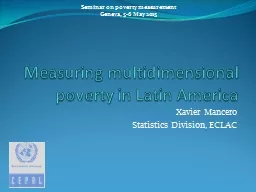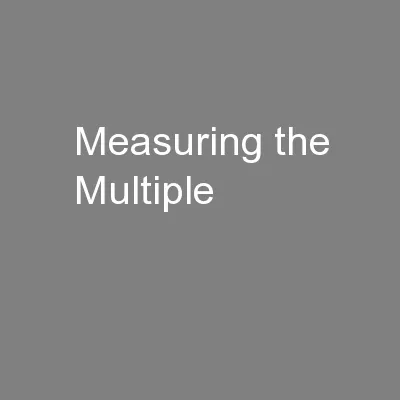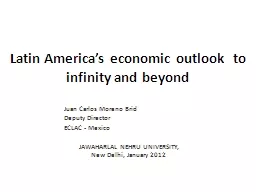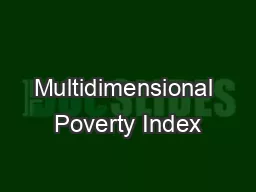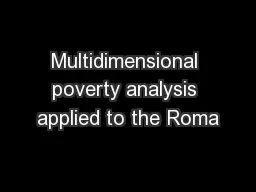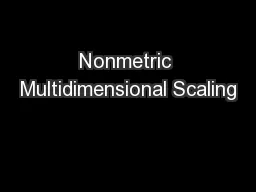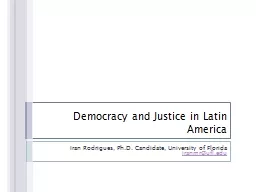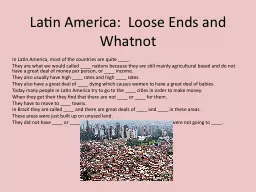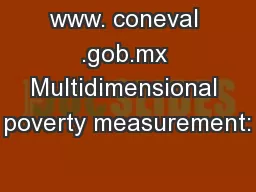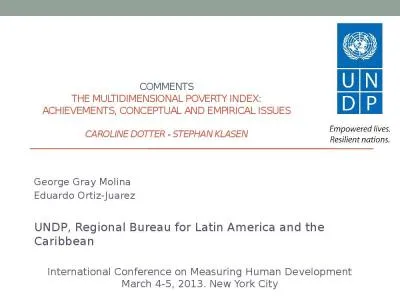PPT-Measuring multidimensional poverty in Latin America
Author : olivia-moreira | Published Date : 2016-03-19
Xavier Mancero Statistics Division ECLAC Seminar on poverty measurement Geneva 56 May 2015 Background Income provides an incomplete assessment of living standards
Presentation Embed Code
Download Presentation
Download Presentation The PPT/PDF document "Measuring multidimensional poverty in La..." is the property of its rightful owner. Permission is granted to download and print the materials on this website for personal, non-commercial use only, and to display it on your personal computer provided you do not modify the materials and that you retain all copyright notices contained in the materials. By downloading content from our website, you accept the terms of this agreement.
Measuring multidimensional poverty in Latin America: Transcript
Download Rules Of Document
"Measuring multidimensional poverty in Latin America"The content belongs to its owner. You may download and print it for personal use, without modification, and keep all copyright notices. By downloading, you agree to these terms.
Related Documents

